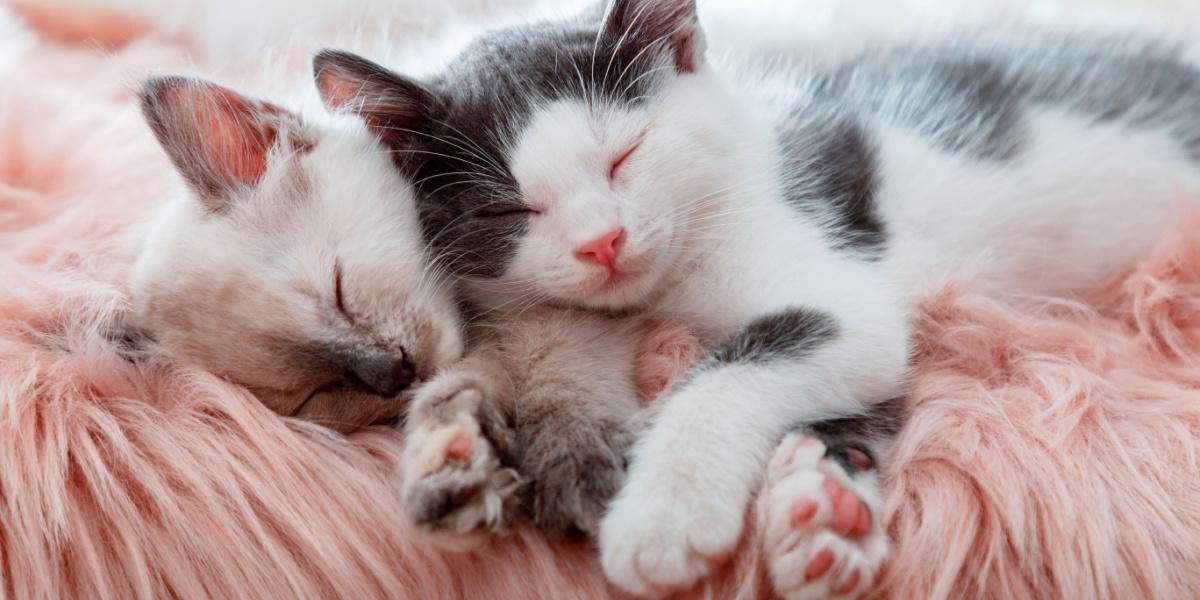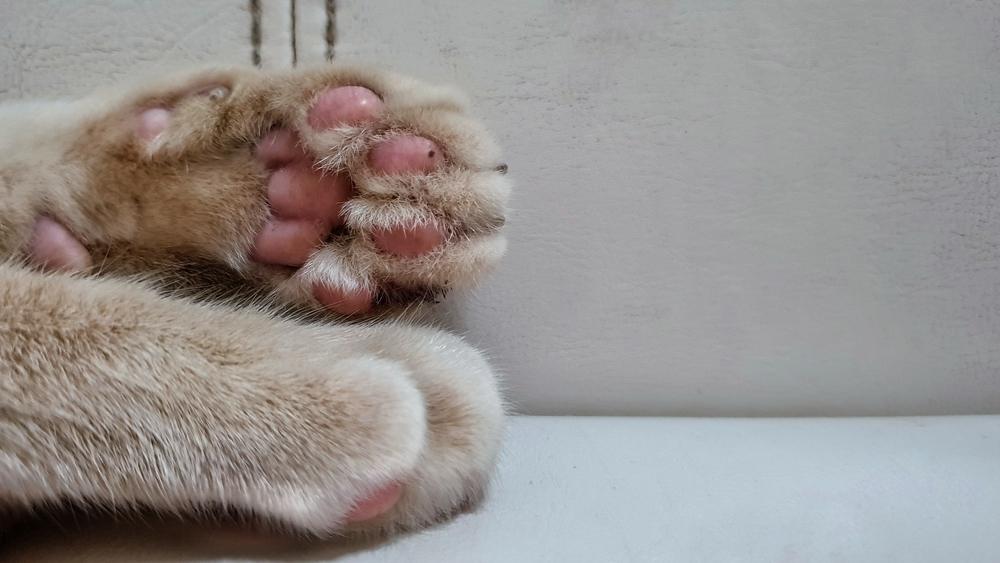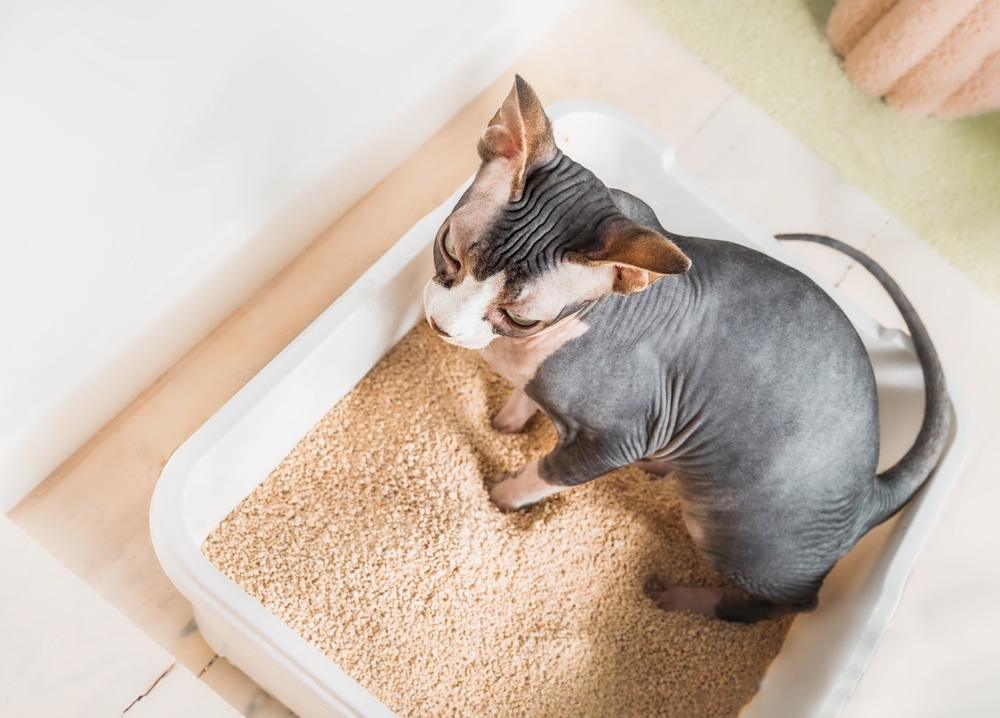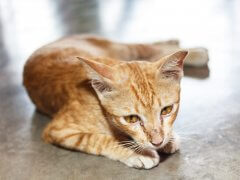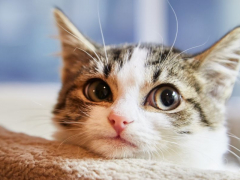Shutterstock.com
Quick Overview: Pododermatitis in Cats
Pododermatitis in cats is known medically as feline plasma cell pododermatitis and colloquially as pillow foot. It is a painful condition that causes inflammation of the pads, making them puffy and uncomfortable to walk on. Although a relatively uncommon condition, pododermatitis can be debilitating. If left untreated, it can lead to severe symptoms and complications.
Pododermatitis requires specific treatment from your veterinarian. This will vary depending on the severity of your cat’s clinical signs. In this article, we’ll discuss everything that you need to know about pododermatitis in cats including causes, symptoms, and treatments available.
Causes of Pododermatitis in Cats
Pododermatitis in cats is an uncommon condition that is still poorly understood. However, it has been observed in cats of all ages, sexes, and breeds.
Immune dysfunction
There’s no clear cause of pillow foot in cats. It’s thought to occur due to a dysfunction of the immune system, similar to an autoimmune condition. It’s likely that an immune response is triggered in the cat’s body from an infection or inflammatory process. This then causes plasma cells (lymphocytes) to infiltrate the cat’s food pad and become activated. Activated plasma cells produce antibodies that lead to swelling and inflammation. This in turn will lead to painful, puffy feet hence the name pillow foot.
Viruses
As it’s thought that pododermatitis occurs in response to infection or inflammation, many authors have suggested a link between pododermatitis and a viral disease, such as feline immunodeficiency virus (FIV) or feline leukemia virus (FELV). In fact, in some studies, approximately 44–63% of cats with pododermatitis were positive for FIV.
Allergies
Pododermatitis may also be seasonal in some cats, so allergic causes have also been suggested. It may be more apparent in outdoor cats, as they are more susceptible to infectious causes and are likely spending more time on hard surfaces.
Symptoms of Pododermatitis in Cats
Pododermatitis usually occurs in two or more paws rather than just one, and it mainly occurs on the main metacarpal and metatarsal pads (the largest pads on their paws).
Cats that are affected by pododermatitis will have issues walking but some mild cases may have no obvious signs at all. The symptoms of pododermatitis can vary from cat to cat but usually involve:
- Inflamed, puffy, swollen paw pads
- Purple or red discoloration of pads
- Striations (lines) or cracks on pads
- Ulceration/wounds on the foot pad
- Bleeding from the pad
- Excessive licking of pad
- Limping or holding their paw up
- Pain or discomfort
Along with symptoms surrounding the feet, cats may experience lethargy, fever, weight loss, or enlarged lymph nodes. This is due to the fact that pododermatitis is caused by an increase in circulating plasma cells.
Complications of Pododermatitis in Cats
Pododermatitis mostly affects the paw pads, but it can cause complications in other parts of the body such as the kidneys. Shutterstock.com
Along with the symptoms listed above, pododermatitis can lead to ulceration and open wounds on the footpads. This will complicate recovery because long-term treatment and surgery may be warranted. Recovery from surgery can take anywhere from 1–4 weeks and cats will need extra care during the post-operative period.
Due to an increase in plasma cell production, cats can develop other conditions in the body. These conditions may be more complicated than the pododermatitis itself. They include:
- Stomatitis
- Immune-mediated glomerulonephritis
- Renal amyloidosis
- Upper respiratory infection
- Swelling over the bridge of the nose
This will likely make the case more complicated and potentially life-threatening for the cat.
Diagnosis of Pododermatitis in Cats
If your cat is showing some of the symptoms above and you’re concerned about pododermatitis, schedule an appointment with your veterinarian. They will take a thorough history from you about your cat’s condition and examine them. These steps alone may be enough for your vet to diagnose pododermatitis or at least have a strong suspicion.
Blood Testing
Your vet will likely want to do further testing to confirm pododermatitis and rule out underlying conditions. This may involve testing for feline leukemia and feline immunodeficiency virus due to the potential links between these conditions. Routine bloodwork may show a change in lymphocyte numbers and elevated globulins if pododermatitis is present.
Biopsy
Your vet may recommend taking a fine needle aspirate (FNA) from a foot pad. This involves using a needle to collect a small sample of cells from the pad, which are then examined under a microscope. A large number of plasma cells may be seen if pododermatitis is present.
Your vet may decide to go straight to taking a skin biopsy from a paw pad, as this is the best way to diagnose pododermatitis. The biopsy is then sent to an external laboratory to be analyzed.
These steps are important to differentiate pododermatitis from other conditions that can affect the foot such as bacterial infections, fungal infections, eosinophilic granuloma complex, pemphigus foliaceus, foreign bodies (something stuck in the foot), or cancer.
Complicated Cases
Cats that are showing other symptoms such as lethargy, fever, or change in appetite may require further testing because plasma cells can also affect the kidneys, mouth, and upper respiratory tract. Tests may include x-rays and ultrasound.
Treatments for Pododermatitis in Cats
Mild cases of pododermatitis may resolve on their own but most cases will need treatment from your veterinarian. Either way, your cat will need to be examined by your vet to see what the most appropriate plan of action is.
Because pododermatitis is caused by an immune reaction, the treatments for it revolve around altering the immune response. The main treatment for pododermatitis in cats is doxycycline. Doxycycline is an antibiotic that has immunomodulatory properties that can improve the symptoms of pododermatitis in 80% of cats.
One-third of cats on doxycycline therapy achieve full remission of clinical symptoms. It requires a lengthy course, often 2–3 months, and needs to be continued long after clinical symptoms have improved. Cats with pododermatitis, even if they achieve remission of clinical signs, may get flare-ups of this condition throughout their life.
The usual dosage is 10 mg per kg. It’s important to give this medication with food or water, as it can cause esophagitis if it stays in your cat’s throat.
Cases that don’t respond to doxycycline are often given steroid therapy (e.g. prednisolone or dexamethasone) or immunosuppressive therapy (cyclosporine). In cats that have severe ulceration of their foot pads, surgery may be needed to remove some of the affected foot pad.
Antibiotics and pain relief may also be needed to keep cats comfortable. If other body systems (such as the kidneys) are affected, other medication, intravenous fluids, and hospitalization may be needed.
Cat Care Tips
Cats with pododermatitis can find some surfaces, such as sand, litter, or concrete to be very irritating to their sore paws. Shutterstock.com
Cats with pododermatitis may be very uncomfortable. These cat care tips will help when your cat is suffering from pododermatitis.
- Provide comfy bedding and surfaces: Pododermatitis causes puffy, swollen feet that may be painful for your cat to walk on. It’s harder for them to walk on tough ground and sleep on hard surfaces. Be considerate of the fact that your cat’s feet are sore and provide them with plenty of soft surfaces to walk on such as rugs or throws, and comfy bedding to sleep on.
- Use soft, fine litter substrate: Some cats with pododermatitis may struggle to use large, firm litter substrates (e.g. pellets) so you may need to swap this out for fine, soft litter that is easier on their sore feet. Scoop out the litter box daily to keep their feet clean.
- Stick to their medication schedule: Your cat may be on medication for a long time and it’s important to stick to this schedule to help improve their symptoms. Contact your vet if you’re having issues giving the medication and call them for advice if you miss a dose.
- Keep up with veterinary visits: It’s important to keep up with your veterinary visits to keep an eye on your cat’s progress. Your vet may need to change the treatment plan based on your cat’s response to the therapy.
- Practice good hygiene: Maintain a clean environment, particularly for cats with open sores on their feet. This will prevent infection in the foot and keep it clean.
Prevention of Pododermatitis in Cats
There is no known cause of pododermatitis in cats, but as it’s caused by an immune reaction, it’s possible that viral or infectious causes may predispose to it. To keep your cat healthy:
- Keep their vaccinations up to date to prevent certain viral diseases such as feline leukemia virus (FELV).
- Feed them a high-quality complete diet that provides all the nutrients that they need.
- Maintain a healthy weight and avoid your cat becoming overweight or obese.
- Cats with allergies may need food trials or medication to control their allergies.
- Seek prompt veterinary care if you think your cat is unwell as they may have an infection or virus. The earlier the treatment, the sooner your cat will be back to themselves and it will avoid chronic inflammation.
- Practice good hygiene and cleanliness in the home to prevent infections and viruses, especially in multi-pet households.
Frequently Asked Questions
What causes pododermatitis in cats?
Pododermatitis in cats is a relatively uncommon and poorly understood condition that affects the foot pads of cats. It’s thought to occur from an immune reaction and therefore some have suggested that viruses, infections, or allergies may cause it. There have been some suggested links between pododermatitis and feline immunodeficiency virus (FIV).
How do I know if my cat has pododermatitis?
Cats with pododermatitis may not have any symptoms at all, but most will show signs of foot pain or limping. The foot pads will appear puffy and may have a purple tinge to them. Your veterinarian will be able to diagnose pododermatitis based on history, physical examination, and testing.
Is pododermatitis painful for cats?
Some cats don’t show any signs of pain with mild cases of pododermatitis, but most cats will experience discomfort and pain. Pododermatitis causes swollen, puffy foot pads which can be extremely uncomfortable to walk on.
Can pododermatitis in cats be cured?
Pododermatitis can be cured in most cats, though various trials and remedies may be necessary. One-third of cats receiving doxycycline medication will be cured, while other cats may need other medication or surgery.
Will pododermatitis go away on its own?
Mild cases of pododermatitis may resolve without any treatment and heal on its own. However, you should always bring your cat to their veterinarian for a check-up if you suspect they may have pododermatitis.
